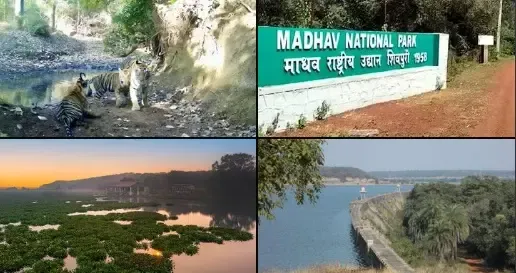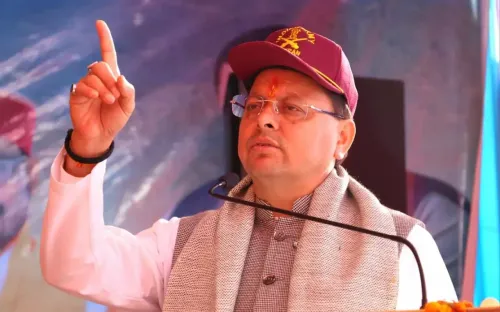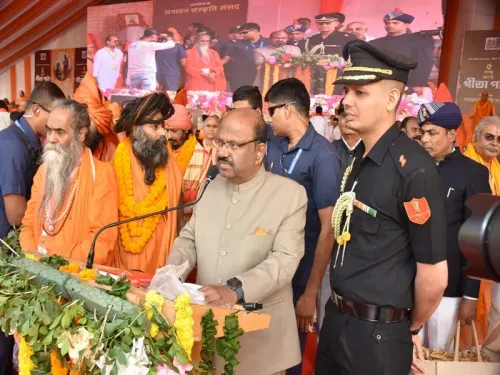Fantastic Update! PM Modi Celebrates Madhya Pradesh's New Tiger Reserve Recognition

Synopsis
Key Takeaways
- Madhav National Park is now MP's ninth tiger reserve.
- PM Modi emphasized India's wildlife diversity.
- Chief Minister Yadav praised the Prime Minister's leadership.
- Tourism growth in Chambal region will create job opportunities.
- Leopards spotted in Kuno National Park.
Bhopal, March 9 (NationPress) Filled with joy, Prime Minister Narendra Modi took to Twitter to announce that Madhya Pradesh's Madhav National Park has received another accolade for its designation as the state's ninth tiger reserve, serving as a longstanding haven for these magnificent animals.
The state proudly holds the title of "Tiger State".
"Fantastic news for wildlife advocates! India is rich in wildlife diversity and boasts a culture that honors wildlife. We will continually lead the charge in safeguarding animals and fostering a sustainable planet," the Prime Minister expressed on his X account.
The Chief Minister of the state, Dr. Mohan Yadav, expressed his gratitude in response: "Sincere appreciation to the Hon'ble Prime Minister for your visionary guidance in recognizing Madhav National Park as India’s 58th and MP's 9th Tiger Reserve! Madhya Pradesh takes pride in spearheading wildlife conservation and protecting our biodiversity."
Just days prior, Chief Minister Yadav had announced that tiger reserve status was on the way for Madhav National Park, located in Shivpuri district. He also hinted at the upcoming introduction of a pair of tigers into the park.
Madhya Pradesh has established its reputation as the "Tiger State", drawing wildlife aficionados and becoming a significant wildlife tourism hub.
The Chief Minister noted that the surge in tourism in the Chambal region would create more job opportunities and self-employment prospects for local youth.
In a thrilling first, leopards have been observed in Kuno National Park in Sheopur district, part of the Chambal area, which is also home to African cheetahs. Furthermore, initiatives are in progress for a gharial and dolphin project in the Chambal River, according to the Chief Minister.
Located in Shivpuri district, Madhav National Park was initially acknowledged in 1956 as Shivpuri National Park, covering 167 square kilometers. It was renamed in 1958 after Maharaja Madho Rao Scindia of the Scindia dynasty.
The park includes Sakhya Sagar, a man-made reservoir recognized as a Ramsar site.
Shivpuri town, once the summer capital, was a larger park and a former hunting ground for the Scindia Maharajas of Gwalior. Sadly, the area experienced degradation following India's Independence, with the last native wild tigers sighted in Madhav National Park in the late 1970s. In 1982, a proposal was made to extend the park along the Sindh River, creating a corridor connecting it to the original 167 square kilometers, increasing the area to 354 square kilometers.
With its new designation as a tiger reserve, Madhav National Park will now encompass 1,751 square kilometers, featuring a core area of 375 square kilometers and a buffer zone of 1,276 square kilometers.










